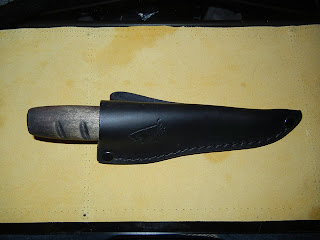I am going to approach this series with a brief overview first and then break out the specific topics that I have enough experience to cover in depth into further installments. Some of the sub topics may broken into further more detailed discussions.
First Aid / Safety
The most essential skill for any bushcrafter is an understanding of basic first aid. Most of the activities in the field involve using very sharp tools and things that are very hot from being in or near a fire. Small cuts and minor burns generally fall into the “when, not if” category so preparing for them is vital. Being outdoors infrequently also increases the likelihood of blisters, sprains, contact with poisonous plants, frostbite, and insect bites and stings. First aid is not limited to the realm of bushcrafting, but is a more general life skill that can be applied anywhere.Knots and Lashings
One of the easiest, cheapest, most fundamental bushcraft skills you can learn is basic knot work. All you need to learn and practice is a piece of cordage. Knots are best initially learned and practiced in the controlled environment indoors. Learning lashing is also easy to learn inside, just add three or four round stick like objects to your cordage. Fortunately most lashing techniques scale in size very well and apply equally to the small and the large. Knot tying is inexpensive (if not free,) safe, mess free and a great place to start even for the youngest bushcrafters.Knife and Tool Sharpening
Knife sharpening is one bushcraft skill that is often best practiced indoors. A sturdy table and chair give the needed stability for the best results. Axes and large saws can be a bit cumbersome indoors but can be sharpened perfectly safely. Even if you don’t have a dedicated bushcraft knife you can also maintain your kitchen cutlery the same way. The small amount of mess that is produced is easily manageable.Whittling and Woodcarving
Making useful things out of natural materials like sticks and branches really is the defining nature of bushcraft. Crafting from nature is what sets the hobby apart from basic camping. Whittling just requires a sharp pocket knife and material to work with. Small dead branches and sticks can be found almost everywhere. Where materials cannot be found laying around for free you can buy raw wood dowels and blocks at hobby, craft and home improvement, and hardware stores. The minimal mess from the sawdust is fairly easy to contain and is easy to clean up.Reading
Reading about and learning new things is essential for mastery of any skillset. The lightest most useful tool in your kit is the knowledge in your head. Knowledge cannot be swept away by the river or lost in the snow. When you combine knowledge with experience, you will gain confidence. With confidence your reliance on gear diminishes and your overall outdoor experience improves. One of the beautiful things about reading is that you can do it almost anywhere that is reasonably dry with adequate light.Flintknapping
Making and using primitive tools can be an enjoyable pastime and a useful survival skill. I have an entire separate series dedicated to my personal flintknapping journey.Compass use and Navigation
Learning to use a map and compass is a skill that can begin indoors. To truly put it to use you need to go outside but can be accomplished even in the most urban of environments. Maps are readily available for nearly every square inch of the planet. Learning the basics of how to read a map is a form of bookwork and is best done initially in a comfortable distraction free environment. Compasses work indoors and out as long as you avoid being near large metal appliances or very close to electrical wiring. You can also learn to orient a map from any window with a good view of surrounding landmarks.Fire Making
While one of the most essential skills for the bushcrafter, making fire is one of the most difficult skills to safely practice indoors. The only time you should ever make a fire indoors is when you have a functional wood burning fireplace or wood burning stove. Friction fire making should only be practiced outdoors as there is a great tendency to loose control of the hearth board and scatter hot material. The best urban option for fire making is a charcoal grill in a safe location where it is allowed by local fire codes.Conclusion
These are just a starter sample of outdoor skills that are easily learned practiced indoors. With a bit of creativity almost any bushcraft skill can be safely practiced in the urban or suburban environment. In my next installment I’ll take one of these topics and cover it in detail.Copyright 2013. All rights Reserved. No portion of this article may be reproduced without the express permission of the author.





























